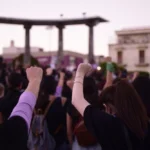Published October 24, 2014
Back in August, when news first broke of a shooting in Ferguson, Mo., the media world, perpetually tingling with eagerness for white-on-black violence stories, plunged into delirium. An unarmed, black 18-year-old “gentle giant” had been shot in the back while running away from a white police officer! He was just preparing to enter college in the fall. He had been assassinated while holding his hands in the air in a gesture of helplessness. “Hands up; don’t shoot,” chanted protesters. The “hands up” gesture immediately achieved iconic status among demonstrators from Boston to New York to San Francisco.
If the early reports of the tragedy had been accurate, I would have been happy to jump on a plane and march with the protesters. I wouldn’t have set fire to any convenience stores or beauty parlors, nor would I, as Missouri’s governor and the U.S. attorney general did, imply that “justice” would mean the “prosecution” of the officer, but I would have demanded a full investigation, and if the evidence supported it, an arrest.
But the reports were not accurate, and we had reason to doubt them as soon as the video of the convenience-store robbery emerged. The theft and rough shoving of the owner didn’t look very gentle. The small cigars Brown stole are often filled with pot.
Now, as the St. Louis Post-Dispatch and Washington Post are reporting, more evidence is emerging that supports the officer’s account. The autopsy (first released in September) shows that Brown was not shot in the back. He was hit in the chest, arm, and forehead. The entry wounds show that his hands were not raised when he was hit, and blood-spatter evidence suggests he was advancing on Officer Darren Wilson. A wound on Brown’s hand contained gunpowder residue, supporting Wilson’s claim that Brown went for his gun while Wilson was seated in the car. There is forensic evidence showing that the gun did, as Wilson testified, go off in the car.
Seven or eight African-American eyewitnesses, reports the Post, support Wilson’s account of what happened that afternoon but have remained out of the public eye for their own safety.
Michael Brown was found to have enough THC in his body to trigger hallucinations. Marijuana doesn’t usually promote aggression, but it can induce paranoia in some people and certainly warp perception. His companion, Dorian Johnson, who provided some of the narrative about Brown’s supposed hands-up posture, has a criminal record and has lied to police in the past.
And so Michael Brown joins a long, very sad list of faux “civil rights” victims. Recall the “epidemic” of black church burnings in the South, the nooses found hanging from black professor’s offices, the KKK appearance at Oberlin College a couple of years ago, the Tawana Brawley rape case, and the Florida black-voter-disenfranchisement case. Each of these, and too many other cases to list, was greeted with lip-smacking relish from the press. All of them were frauds or hoaxes. In this familiar morality play, it’s always 1963; it’s forever Selma. Participants luxuriate in the warm bath of sympathy for victims of the kind of white racism that disappeared decades ago. The awful period in American history when Emmett Till (to whom Brown has been compared, which is outrageous) could be lynched for smiling at a white girl, when the Scottsboro boys were found guilty of rape despite one of the “victims” admitting she had lied, when blacks faced endemic racism everywhere, is long gone.
Now racism is the province of a few kooks, while the overwhelming majority of Americans of all colors agrees on the sacredness of equality, and votes twice for a black president to underscore it. Americans have many more pressing problems than racism — including family decay, terror threats, educational mediocrity, stagnant growth, intergenerational poverty, and shrill polarization.
So it’s heartbreaking to watch the kabuki theater play out yet again and to know that thousands, maybe millions of American blacks are being deceived into believing that an 18-year-old who showed really bad judgment in attacking a police officer is a civil-rights hero, and that young black males minding their own business on city streets are in danger of being shot by police for fun. It’s demoralizing for blacks and a calumny on whites.
— Mona Charen is a senior fellow at the Ethics and Public Policy Center. © 2014 Creators Syndicate, Inc.







